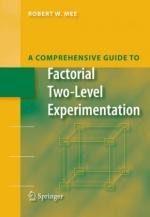|
This section contains 413 words (approx. 2 pages at 300 words per page) |

|
The pattern of multiplying a positive integer by the next lower consecutive integer occurs frequently in mathematics. Look for the pattern in the following expressions.
7 × 6 × 5 × 4 × 3 × 2 × 1
4 × 3 × 2 × 1
(n + 5) × (n + 4) × (n + 3) × (n + 2) × (n + 1) × n
The mathematical symbol for this string of factors is the familiar exclamation point (!). This pattern of multiplied whole numbers is called n factorial and is written as n! So, starting with the greatest factor, n, the factorial pattern is as follows:
n! = n(n - 1)(n - 2)(n - 3)… (1).
So,
3! is 3 × 2 × 1 = 6
5! is 5 × 4 × 3 × 2 × 1 = 120 and 1! = 1.
Zero factorial (0!) is arbitrarily defined to be 1.
Most scientific calculators have a key (such as x!) that can be used to find factorial values. As n becomes larger, the value of its factorials increases rapidly. For example, 13! is 6,227,020,800.
How Factorials Are Used
Many mathematical formulas use factorial notation, including the formulas for finding permutations and combinations. For example, the number of permutations of n...
|
This section contains 413 words (approx. 2 pages at 300 words per page) |

|


